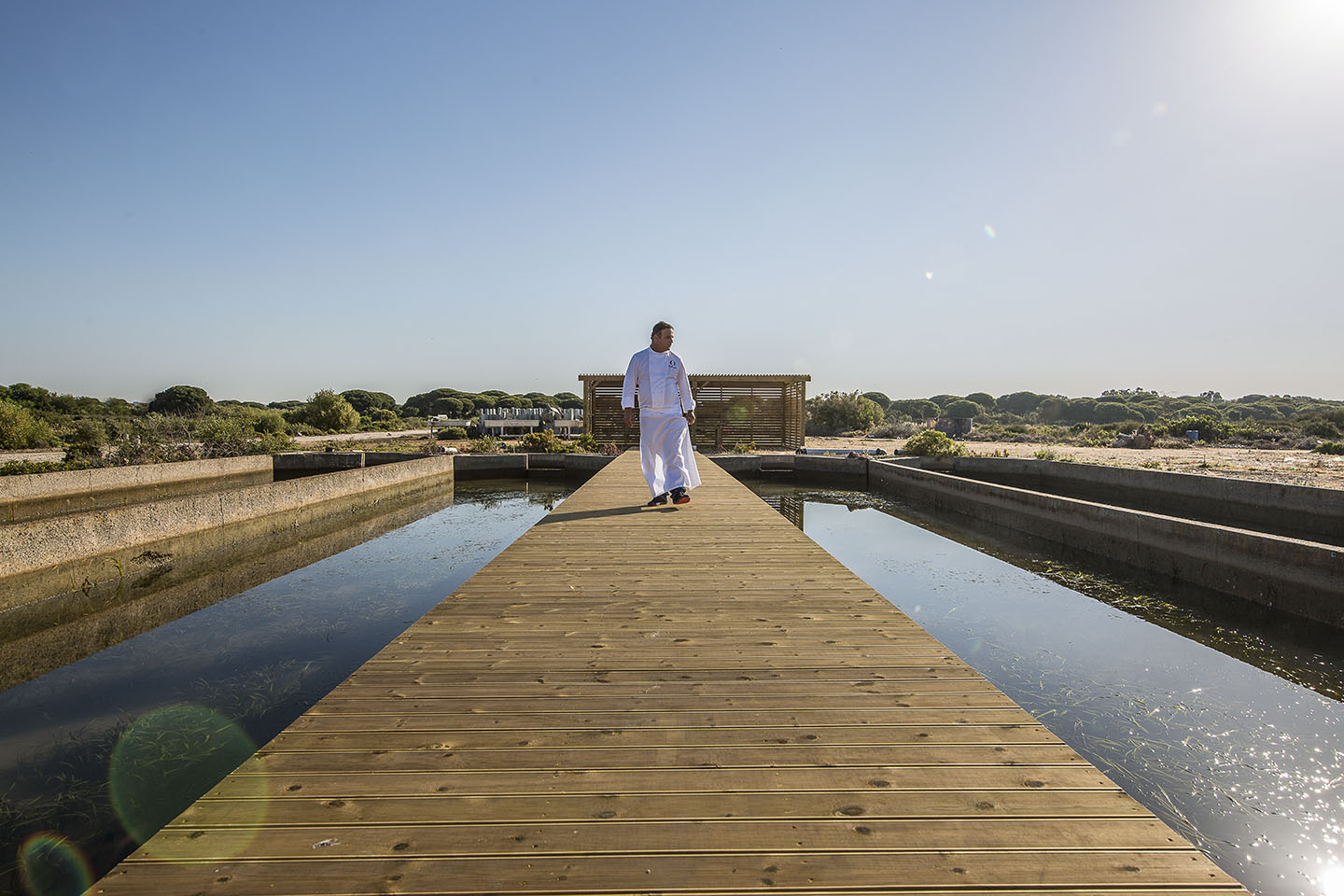Spanish Chef Ángel León and his research team are investigating the culinary prospects of a seagrass grain that they believe can help solve the climate crisis and improve food security.
León’s research on the Zostera Marina grain, a type of seagrass, began in 2017 when he stumbled upon the grain in the Bay of Cádiz in Southern Spain. Over the last few years, the research team at León’s restaurant, Aponiente, have explored the grain’s potential as a culinary ingredient.
Juan Martín, Environmental Manager of Aponiente and coordinator of the Zostera Marina Project, tells Food Tank, “Zostera Marina seeds have such great culinary potential because of their similarity to other grains. One could make flour, or ferment it into alcohol, the possibilities are endless.”
According to the U.N. Environment Programme, seagrass meadows play a vital role in the ecosystem. They stabilize the seafloor, provide food and nursery habitats, and maintain water quality. Although they cover less than one percent of the sea floor, seagrass meadows hold around 10 percent of the carbon stored in the ocean. But seagrass meadows are steadily declining because of pollution and habitat destruction.
To harness the power of seagrass, León and his team are cultivating the Zostera Marina seed in the Bay of Cádiz, near his restaurant. The cultivation area, measuring around 3,000 meters-squared, also serves as a seed bank for future cultivation and restoration projects.
“Integrating seagrass into aquaculture is a natural next step which will generate positive impacts,” Martín tells Food Tank. “Not only would Zostera serve as a nursery habitat, but it would help clean the water and sequester carbon as well. If seagrass farms are strategically placed in coastal areas, they could help prevent erosion by anchoring sediment and reduce the impact of storm surge.”
León’s team is not the first to utilize Zostera Marina. The seagrass has been used for a variety of purposes, including mattress stuffing, livestock feed, manure, and wall insulation. And the Seri community in the Gulf of California also harvested the seeds of Zostera Marina for consumption.
Martín tells Food Tank that the research team visited the Seri community to learn about the grain. “Every spring, these seagrass blades wash up on shore filled with seeds and the Seri people collected them. The seed is called Xnoois within the Seri culture.” Martín tells Food Tank. He recounts the transformation of Xnoois into a flatbread similar to a tortilla during their visit with the community.
“Our favorite recipe has been the tortillas from the Seri people because of the message and cultural heritage it carries,” Martín tells Food Tank.
Emeritus Professor of Marine Science, Dr. Kenneth Moore, however, is uncertain Zostera Marina will become a reliable source of food, citing complications with cultivation, and harvesting procedures. “Cultivation of seagrass artificially in ponds would require exceptional water quality, temperature controls and light. We have had little success in keeping seagrass growing in greenhouses for any amount of time,” Moore tells Food Tank. Even for harvesting seeds, he emphasizes that the process would be too difficult to replicate for large-scale commercial use.
But Martín remains optimistic that Aponiente’s Zostera Marina project can introduce new opportunities to restore seagrasses, fight climate change, and even improve food security. Currently, the team is going through the process of certifying Zostera Marina as a novel food through the European Food Safety Authority. Working closely with research institutes and local universities, Martín hopes that they will be able to serve the Zostera Marina grain at their restaurant within the year.
Photo courtesy of Aponiente











